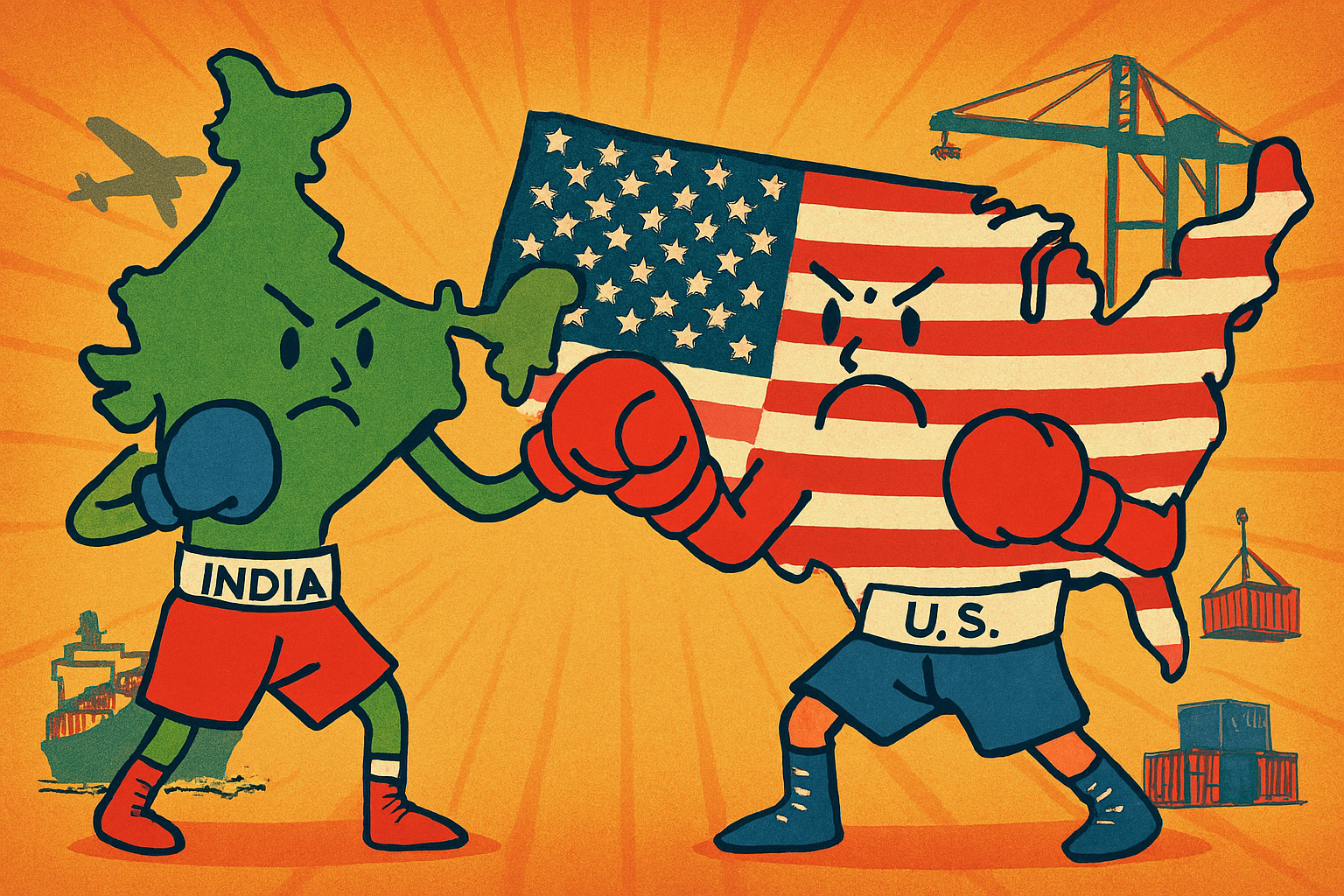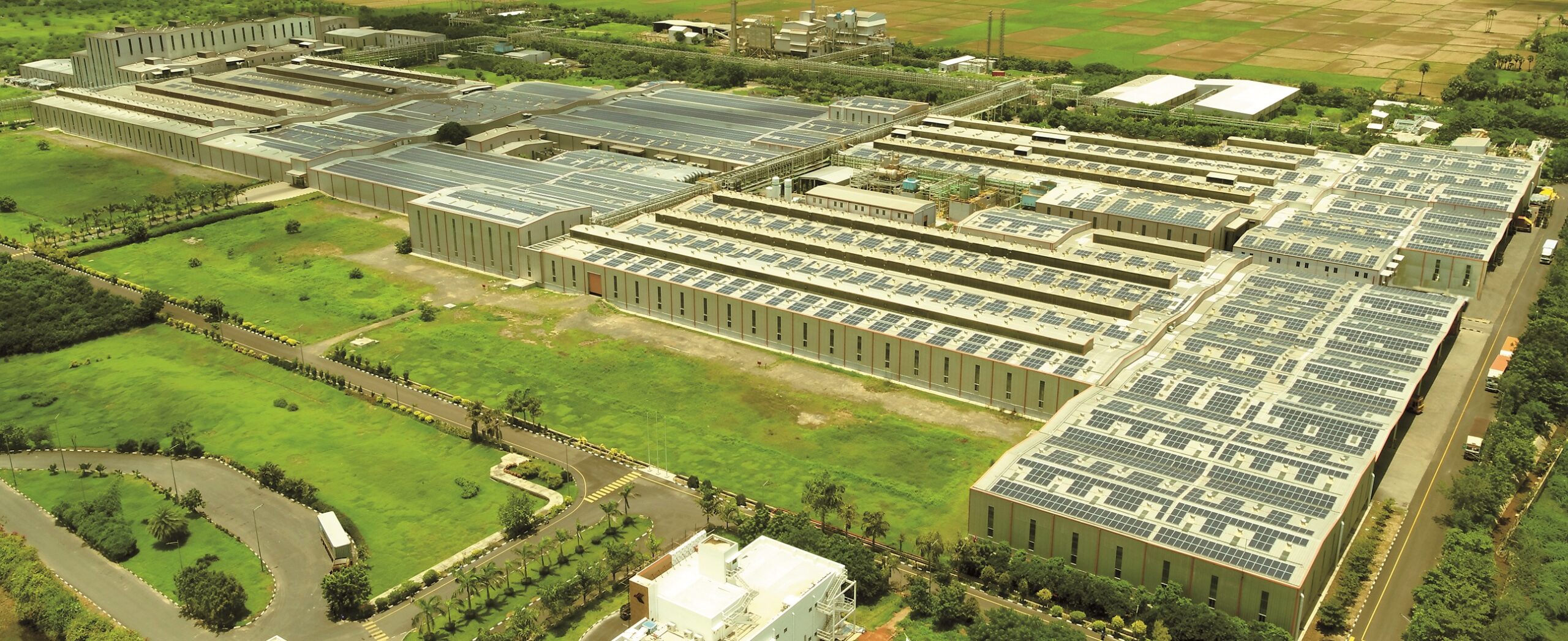On April 5, 2025, the White House used emergency powers to levy a 10 per cent across-the-board tariff on all U.S. imports, then layered “reciprocal” surcharges for countries with large U.S. trade deficits. In late August, Washington doubled the effective duty on a wide swath of Indian goods, taking the combined rate to as high as 50 per cent, with officials citing India’s continued purchases of Russian oil and a “one-sided” trade relationship. The 50 per cent rate took effect on August 27, 2025.
While some products—most notably pharmaceuticals and smartphones—have been exempted so far, the sweep is broad: garments, footwear, furniture, jewellery, shrimp/seafood, some chemicals and industrial inputs now face the new top rate. Reporting indicates roughly half to two-thirds of India’s merchandise shipments to the U.S. are covered.
The political temperature rose further on September 1, when President Trump publicly called the bilateral trade “one-sided” and claimed India had offered to cut its own tariffs to “nothing”—even as New Delhi simultaneously signaled it would seek relief measures for exporters at home and pursued talks on a narrow trade package.
The 50 per cent U.S. tariff on Indian goods is one of the steepest bilateral measures in decades. It targets exactly the labour-intensive, price-sensitive segments that drove India’s export boom to the U.S., so the pain in India is immediate and concentrated—even if the broader economy remains resilient.
For the United States, the impact shows up as higher prices in discrete consumer categories and input cost frictions for some manufacturers. The macro hit is smaller than the category pain—but layered tariffs across partners compound the bill. Politically, both sides are still talking. A pragmatic, narrow deal that preserves essential supply chains (drugs, tech hardware) and eases pressure on India’s MSMEs would serve both economies—and the wider strategic relationship—far better than a prolonged tariff war.
The economic baseline: how big is U.S.–India trade?
In 2024, total two-way trade in goods and services was about $212 billion, making India a top-10 U.S. partner. On the goods side, the U.S. imported roughly $87–91 billion from India and exported about $41–42 billion to India—leaving a sizable U.S. goods deficit.
Monthly U.S. Census series show India is an important (but not top-five) goods partner; composition skews toward U.S. imports of consumer goods (apparel, home textiles, jewellery), industrial supplies/chemicals, auto parts, and seafood, and U.S. exports of energy, aircraft parts, machinery, and farm goods.
This structure is crucial: tariffs bite hardest where India sells price-sensitive consumer items and intermediate inputs into U.S. supply chains.
Who will feel it in India
1) Labour-intensive exporters (and the MSME backbone)
Apparel, home textiles, carpets, footwear, and gems & jewellery are disproportionately exposed to the U.S. market. A 50% border tax can erase thin margins, forcing discounting, production cuts, or relocation. Analysts and trade groups warn of pressure on thousands of small and medium exporters and as many as millions of associated jobs across hubs such as Tiruppur (knitwear), Surat (gems), Panipat (home textiles), Agra (footwear), and coastal seafood clusters.
2) Seafood/shrimp exporters
India is a top supplier of farmed shrimp to U.S. retailers and foodservice. The new tariff sharply reduces competitiveness versus Ecuador, Vietnam and Thailand, risking market share and farm-gate incomes.
3) Chemicals and industrial inputs
Organic chemicals and certain intermediates used by U.S. manufacturers now face much steeper duties, setting up either price cuts by Indian producers or substitution toward other Asian suppliers.
Relative bright spot: Pharmaceuticals (especially generic formulations) appear exempt for now—pragmatic recognition of U.S. dependence on Indian generics. That said, policy is fluid; any spillover into APIs or finished drugs would be immediately inflationary and disruptive.
The government has flagged liquidity support, SEZ flexibilities, and other measures to cushion exporters while it keeps talking to Washington. Policy commentary in India also urges using the shock to tackle domestic cost disadvantages and open new markets (U.K., Australia, UAE).
Who will feel it in the United States
1) U.S. consumers and retailers (near-term higher prices)
The tariff functions as a consumption tax. For India-heavy categories—apparel, home goods, jewellery, footwear, and select furniture—importers will try to pass costs on. Large retailers can re-source over time (e.g., to Vietnam, Bangladesh, or Latin America), but switching is not instantaneous, and many SKUs are India-specific (e.g., cotton made-ups, rugs). Economy-wide estimates of the 2025 tariff build-out suggest meaningful hits to household purchasing power—roughly $1,300 per household on average across all tariff actions—though the India-only slice is a subset of that total.
2) U.S. manufacturers using Indian inputs
Some chemicals, auto components, industrial textiles, and gems feed into U.S. manufacturing and jewelry finishing. Tariffs raise input costs and complicate inventories, especially for SMEs with single-country bills of material.
3) Health care (watch list)
If exemptions on pharmaceuticals narrow, U.S. payers and patients would face higher drug costs quickly. For now, exemptions reduce this risk but do not remove it.
4) U.S. exporters to India (indirect effects)
India hasn’t announced broad retaliation as of this writing, but higher-friction ties can still dent U.S. sales prospects (energy, aircraft parts, farm goods) if political space for deals narrows. New Delhi’s priority appears to be cushioning exporters and continuing talks rather than tit-for-tat, but the trajectory remains volatile.
For India, Newsroom and analyst tallies suggest 50–65 per cent of India’s goods exports to the U.S. (call it $45–$60 billion based on 2024 levels) face the 50 per cent rate. That’s material enough to shave growth and employment in exposed clusters, even if the overall macro impact is cushioned by strong domestic demand and diversification. A weaker rupee could offset a slice of the tariff, but not 50 percentage points.
For the United States, India accounts for a mid-single-digit share of U.S. goods imports; category-specific price rises are the bigger story than a macro trade shock. Still, layered tariffs (global 10 per cent baseline plus country surcharges and additional measures on Europe/China) add up to broader price pressure and sourcing churn.
The tariff step arrives amid a larger restructuring of U.S. trade policy (reciprocal surcharges, sectoral probes under Section 232/301). It also intersects with a strategic relationship that has deepened over a decade. The latest moves have already produced diplomatic ripples—India spotlighted opposition to unilateral “coercive measures” at the SCO, Modi met Xi in China for the first time in years, and rhetoric on both sides hardened—though both capitals also say they are still talking. The risk is that commercial friction seeps into tech/defense cooperation and Quad coordination; the opportunity is a reset via a narrow trade package that preserves strategic alignment.
What can Indian exporters do about it?
India can re-route some exports to other markets, and a part of the shock can be absorbed at home—however, the scale and speed will differ by product.
With respect to textiles & home textiles, alternative markets exist—and some already carry tariff advantages.
For instance, with the UAE (CEPA) zero/low duties have lifted India–UAE trade and created room for apparel, home textiles and jewellery; exports to the UAE rose post-CEPA and total bilateral trade hit ~$100 bn in FY25.
Most Indian textiles/apparel to Australia enter duty-free, giving Indian suppliers a pricing edge; apparel shipments to Australia have grown under the deal.
The UK FTA (finalized May 2025) and EFTA TEPA (signed Mar 2024) open or ease access to developed markets beyond the U.S. Industry bodies and the government are actively pushing diversification toward Japan, the UK, UAE, Switzerland, and Australia as alternatives.
But can these markets absorb U.S.-scale volumes quickly?
Not fully. The U.S. is still the single biggest buyer of many Indian cotton made-ups (towels, sheets, rugs). Even with FTAs, buyers need time to audit factories, re-do testing/labels, and reset assortments—so displacement is partial in the next 6–18 months. (This is a practical sourcing constraint inferred from sector reports and buyer behavior.)
Domestic cushion is real—but product-mix matters:
India’s domestic textiles & apparel output is ~US$176 bn—far larger than exports—so some capacity can be redirected to Indian retail and e-commerce. Home textiles also have a growing local market. Still, export-spec SKUs (sizes, fabrics, compliance) don’t map 1:1 to domestic demand, so utilization won’t be perfect.
Reduced U.S. orders are already cooling mill demand for cotton; India is preparing record state procurement to support farmers, which signals a short-term downshift in spinning/processing.
In the seafood sector, in FY 2023–24, ~53.5% of India’s vannamei shrimp went to the U.S.; China (~16%) and the EU (~9%) were the next biggest destinations. A 50% U.S. tariff therefore hits India’s core market squarely.
New Delhi has urged exporters to expand into the EU, Japan, South Korea, the UK, Russia, Australia, West Asia and SE Asia; the latest MPEDA data still shows the U.S. and China as the top buyers, suggesting diversification will take time.
India’s per-capita fish consumption ~8–9 kg/year is rising but remains low by global standards; premium farmed shrimp is still a niche in domestic retail/HoReCa due to price points and cold-chain limits. In the near term, much of the displaced volume would require discounting or market switching rather than full absorption at home.
Re-routing some volume to FTA markets (UAE, Australia; UK and EFTA as they phase in) and expect price cuts and longer sales cycles while buyers qualify suppliers. Domestic retail provides a meaningful partial buffer, especially for mid-market apparel and home categories, but not a complete replacement for U.S. orders in the short run.
In the seafood sector, the U.S. share is so large that near-term pain is acute. China, the EU and Japan can take more, but not all at once; domestic demand helps at the margins only. Policy support and product/value-addition pivots (cooked, marinated, ready-to-eat) will matter.
What exporters can do now
Lean on FTA routes (UAE, Australia; prepare for UK/EFTA) and target buyers already diversifying from China.
Try value-addition over commodities: Fashion/trend capsules in textiles; cooked/peeled/seasoned SKUs in shrimp to defend margins. (Strategy inference consistent with recent industry notes.)
Domestic pivot, selectively: Plug into India’s US$115–176 bn apparel/home market via modern retail and D2C for SKUs that translate well; re-engineer export-spec lines where needed.
Finance & inputs: Use GOVT schemes (PLI, export credit) and cheaper imported cotton (duty relief) to protect cash flows while demand resets.
Alternative markets and India’s sizeable home demand can soften the blow—especially for textiles—but they won’t fully replace U.S. orders right away. Shrimp is the most exposed; textiles are better placed if firms move fast on FTAs, product tweaks, and domestic channels.
Key sources: Official U.S. tariff notices and data; Reuters, Bloomberg, AP, Al Jazeera; BEA/Census trade series; and sector reporting



